These homes keep L.A.’s most vulnerable from becoming homeless. Now they’re closing
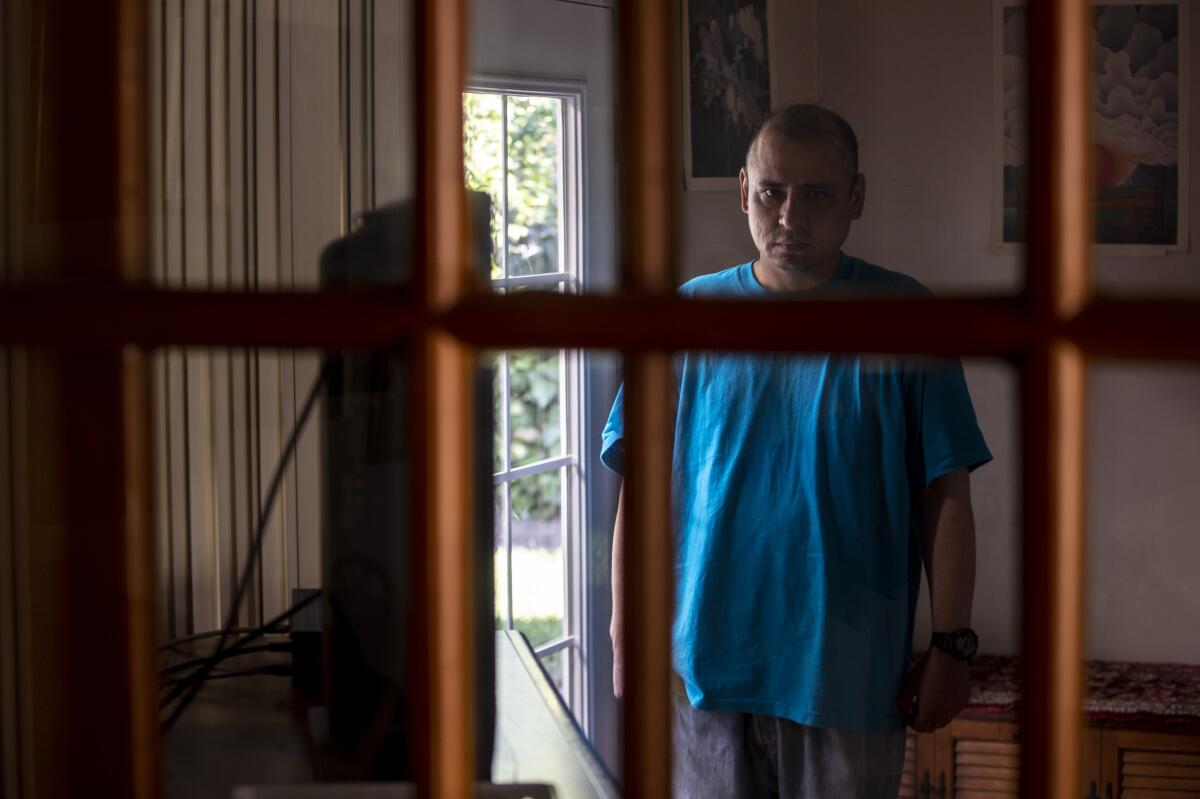
The news came in September: Long Beach Residential, a 49-bed home for adults who are mentally ill, was being sold. The residents of the converted apartment building, some of whom had lived there for decades, would have 60 days to move.
It’s a scenario that is becoming increasingly common across California, brought on by a combination of an inadequate state funding system and California’s red hot real estate market.
The problem is particularly acute in Los Angeles County, where board-and-care homes are disappearing even as hundreds of millions of dollars are being spent to house homeless people. An April survey estimated that 39 such facilities had closed in the previous three years — eliminating 949 beds out of an estimated 6,100.
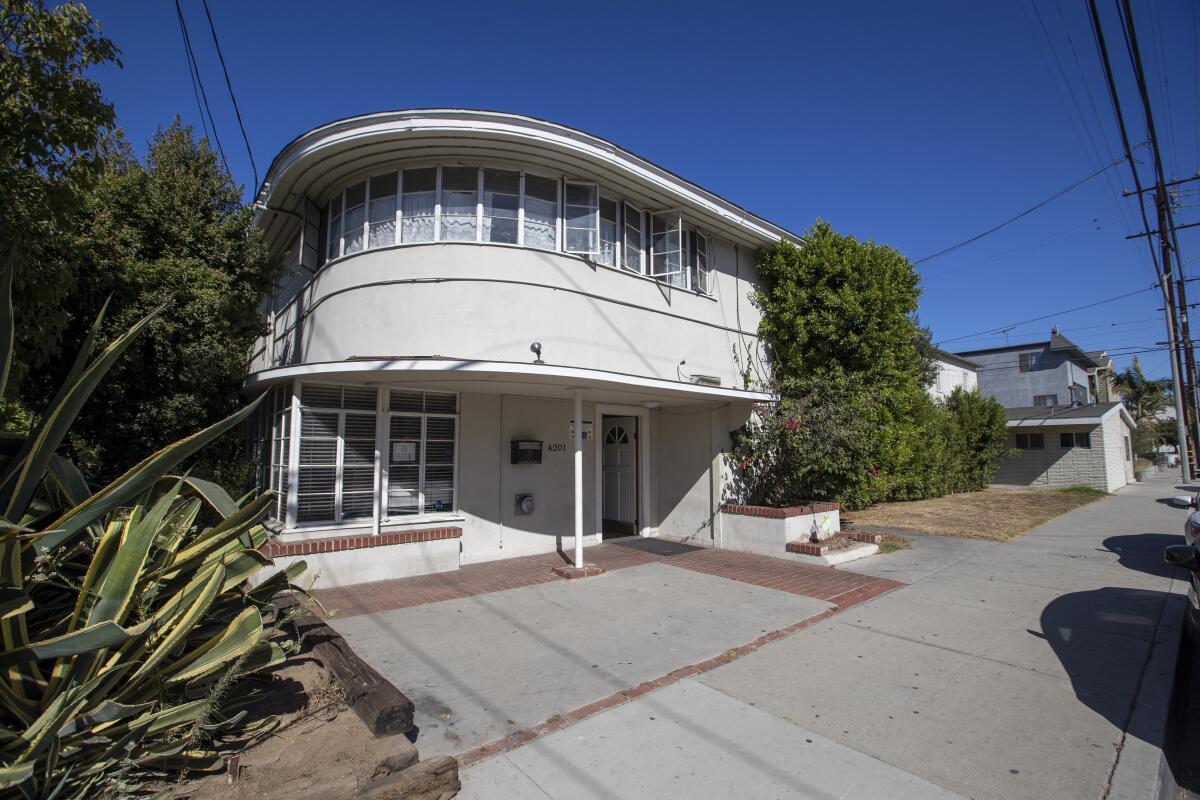
The board-and-care crisis is “what keeps me awake at night,” said Jonathan Sherin, director of the Los Angeles County Department of Mental Health. “We haven’t paid attention to it for years. We’ve lost thousands of units.”
The homes — which provide 24-hour staffing, serve three meals a day and administer medication — are for adults with debilitating mental illness who are unable to care for themselves. Most residents are poor as well and, therefore, at high risk of homelessness.
Reimbursement for the services board-and-care homes provide, which is based on state budget allotments and Social Security levels, is currently about $35 a day per resident.
That rate has fallen so far behind inflation that operators say it is barely enough to cover food and pay their staffs. Some are struggling to maintain aging buildings that are worth more as real estate than as a business.
Earlier this year, the owner of a 70-bed facility in Claremont put her board-and-care up for sale for $4.3 million. Two years ago, a couple shut down a 100-bed home, demolished it and replaced it with market rate apartments because, they said, they couldn’t afford to keep it open. And apartments are easier to manage.
“You don’t have to come every day,” one of the owners said. “You don’t have to be on the phone 24 hours. You don’t have people harassing you.”
The couple still own a second board-and-care home that they’ve operated for 35 years. They’re hoping for an increase in the reimbursement rate that will allow them to continue, but say they can’t wait much longer.
“If I’m not going to get more money, I’m going to close,” the owner said.

‘A lot of people’ will die
The Times contacted the owners of several board-and-care homes who said they were considering, or were in the process of, closing. Few would speak on the record, citing concerns about alarming their patients and staff or incurring unwanted attention from regulators.
Most were long-term owners who had first-name relationships with their residents, some knowing each other for decades. The owners said they were barely breaking even, and foresaw going into the red when the minimum wage goes up in the city of Los Angeles next July. They are not free to raise their prices, which are set by the state.
If residents are not fortunate enough to find a vacancy at another board-and-care, there is no assurance they will remain housed. Some may be taken back by frazzled families. Others may wind up in unlicensed homes. An unknown number land on the streets, in jail or in mental hospitals.
“I know what it’s like when people die,” said Barbara Wilson, a consultant who lost her own son to mental illness and homelessness. “We’re on the verge of having a lot of people die because of the lack of care.”
In a 2018 report titled “A Call to Action,” Wilson linked the board-and-care closures in L.A. County directly to the homelessness crisis. The homes, the report said, fill a housing niche for a population with disabilities that make them unable to live independently — even in apartments with on-site services.
Caroline Kelly, a former member of the Los Angeles County Mental Health Commission who also had a role in writing the report, said this is especially true for adults with severe mental illness discharged from psychiatric hospitals.
“You have actually made progress and done well, you can’t afford to move anywhere else,” she said. “You live on Social Security income and you don’t qualify for housing because of the rules of who is eligible.”
The report identified eight homes in the county as being at risk of closing. Two of those since have shut down.
Other homes have been converted into lucrative businesses. When the Los Angeles Centers for Alcohol and Drug Abuse bought the 47-bed Eden Manor in South Gate, it scrapped plans to maintain it as a board-and-care and shifted to its core business of treating addiction.
“We couldn’t afford to keep that program open,” said Chris Borden, the agency’s director of operations.
Residents of the home in Long Beach got a reprieve last month when the building’s buyer failed to get financing for the $3.1-million sale. The owners pulled the facility off the market to stop the eviction process. But 12 residents had already moved, leaving a bigger hole in the budget.
But even more consequential than the loss of beds, said Sherin of the county Department of Mental Health, is the loss of the properties.
“It could take years and years, decades to re-site projects for people who are perennially excluded from our community,” he said.
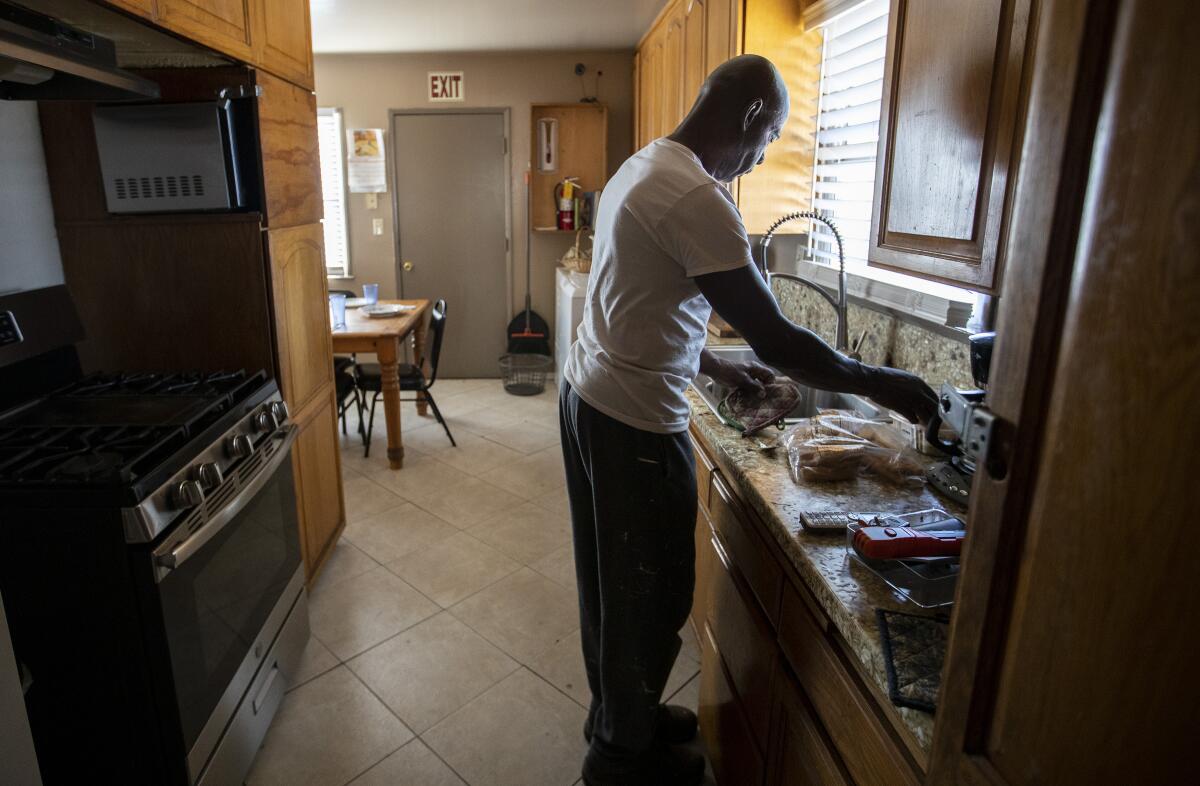
‘It was a godsend’
Board-and-care homes licensed to serve people who are mentally ill were written into state law in the 1970s as a community alternative to the state mental hospitals that were being closed at the time. The Social Security-based funding led to a mission-driven, low-profit business model.
Advocates say there were never enough of the facilities to serve the population. But there is no official count of board-and-care beds because they are included in a licensing category with homes for people who are developmentally disabled — facilities that are more numerous and better funded by the state.
Adding to the confusion, an unknown number of low-income people with mental illness live in homes for the elderly that are licensed under a different category.
At the request of Los Angeles County, the California Community Care Licensing Division conducted a survey to estimate the number of beds currently available for mentally ill adults. It found that there are about 154 homes in the county still open, with a total capacity of 5,129 beds. The 39 closures over three years represented a 16% decline.
Those facilities range from single-family homes with as few as six beds to apartment buildings with hundreds. Residents commonly share bedrooms and are prompted to take their prescribed medication, though they cannot be forced. Residents are free to come and go as they please.
Some serve families with resources or insurance and charge monthly rates as high as $10,000.
Most beds, it’s not known exactly how many, serve those who can’t pay. For them, the reimbursement rate is $1,058 per month — or about $35 per day — per bed. It’s made up of the resident’s Social Security disability payment and a state supplement for out-of-home care set by the annual budget process in Sacramento.
Last year, the Social Security rate went up by about $20. The state supplement, which was reduced during the Great Recession, hasn’t been raised since 2017.
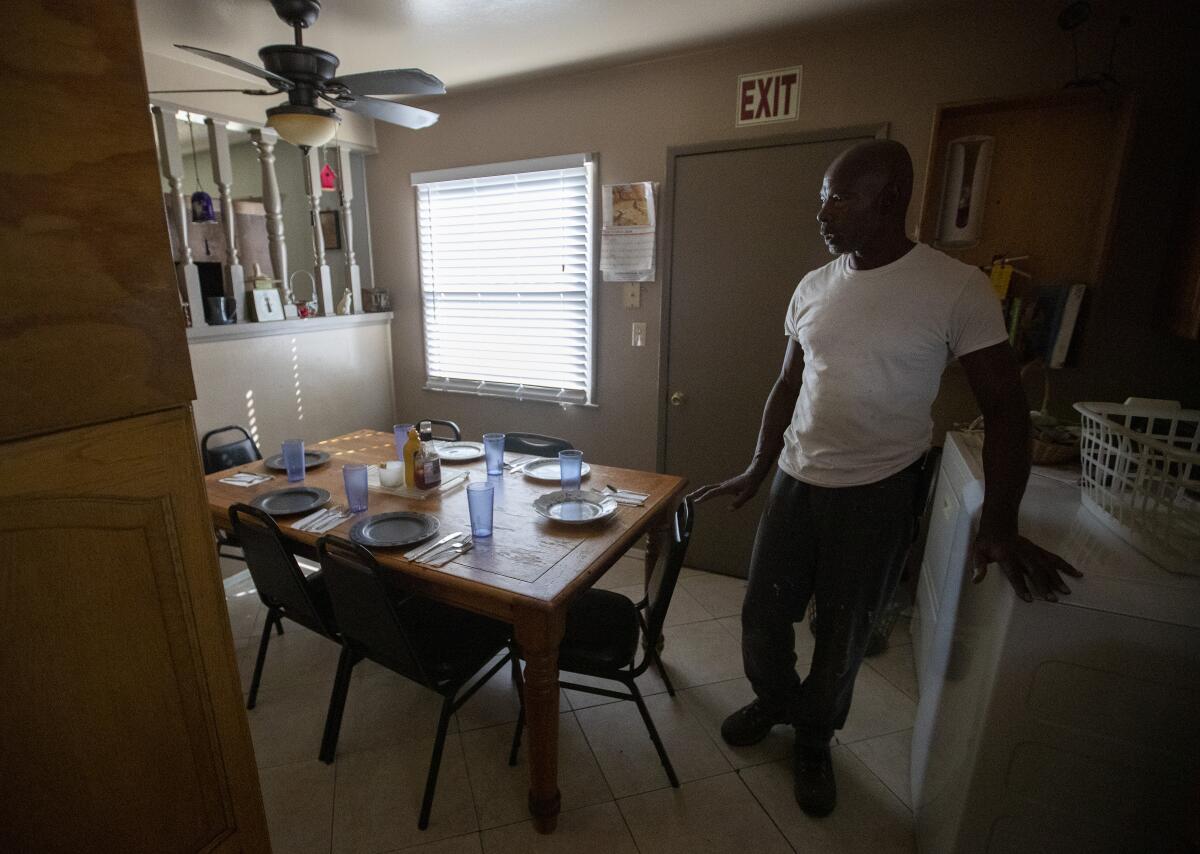
Advocacy groups — including the California Behavioral Health Planning Council and the Steinberg Institute, a nonprofit formed by Sacramento mayor and state homelessness task force co-chair Darrell Steinberg — lobbied unsuccessfully this spring for an $18-million boost to bring the reimbursement rate to at least $2,000 per month.
The effort was hampered by a lack of solid data, both on the population being served and on the number of beds in need of the subsidy, said Adriana Ruelas, legislative affairs director for the Steinberg Institute.
Anecdotal evidence since collected by the California State Assn. of Counties and several other agencies suggests that about 40,000 people are eligible to live in board-and-care homes. The advocacy groups plan to try again next year.
Separately, a bill authored by Assemblyman Richard Bloom (D-Santa Monica) would have required the California Department of Social Services to collect data on homes that accept mentally ill adults. The bill was held this year, but likely will be brought back before the state Legislature.
Responding to a mandate by the L.A. County Board of Supervisors, Sherin has recommended additional strategies to address the funding problems. Among them, he said in an Oct. 23 report, would be to treat board-and-care homes as long-term housing so residents could qualify for state rental subsidy programs, such as Section 8, that currently exclude licensed facilities.
“For many people, particularly those with serious persistent mental illness, it’s collaborative housing that is long-term,” Sherin told The Times.
Most low-income board-and-care residents are alone in life, having lost all family connections, owners told The Times. But for parents struggling to provide the best life for their grown sons or daughters who are mentally ill, a board-and-care home can feel like salvation.
Lidia Miranda said she knew she could no longer handle her son when he injured himself in a suicide attempt and came home from the hospital in a wheelchair. She turned to Wilson, who recommended getting him into Blake Home, a six-bed board-and-care in Sylmar.
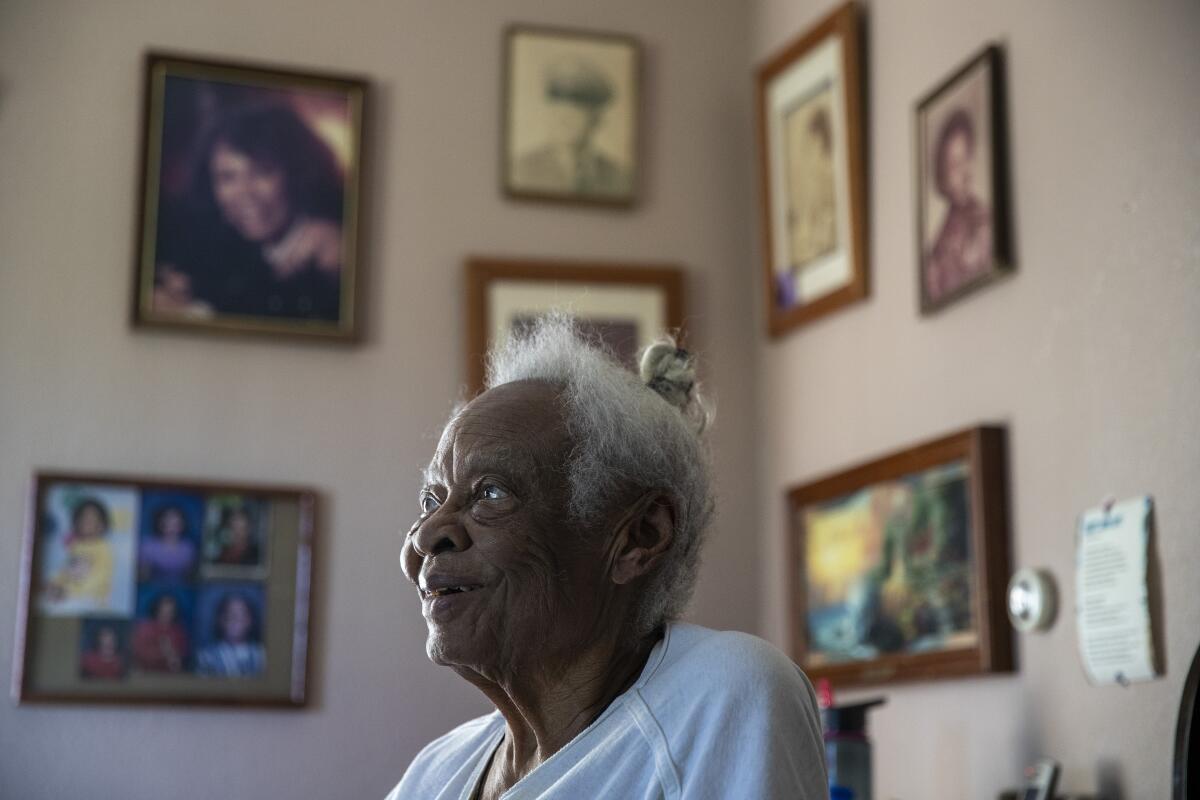
The owner, Catherine Blake, has run the home since the 1980s and is now in her 90s. She’s turned the operation over to her son, Sam — in addition to his work as a contractor — who cooks meals, does laundry and maintains the property.
“It was a godsend,” Miranda said. “It was a difficult transition because he was angry with us. He feels like we kicked him out.”
But in less than a year, she said, her son was able to move to a sober living home and eventually into an apartment with on-site services.
The Times reached out to several parents, most of whom asked to remain anonymous, keenly aware of the societal stigma of mental illness.
“Nobody wants to talk about it,” said Wilson, admitting that she hid her son’s mental illness from her own mother. “There’s huge shame. It’s like, what did I do wrong as a parent.”
Sam Blake said he is going to keep the board-and-care home open for residents as long as his mother is alive. But at 71, he doesn’t see a long future in the business.
“My niece who helps us out, and my son, they don’t want no part of it,” he said.
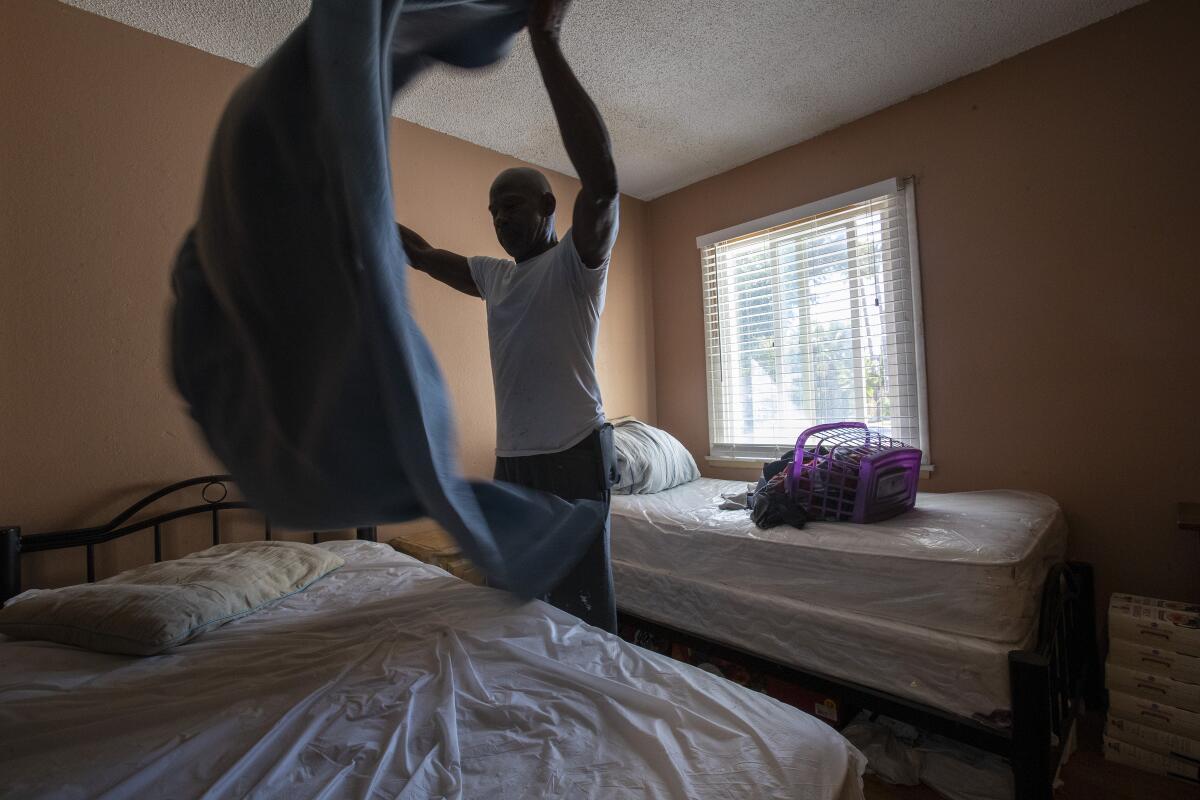
Counties left on the hook
Until help comes from the state in the form of higher reimbursements, the burden of a disintegrating board-and-care system will continue to fall primarily on counties, which have a legal responsibility in California to care for residents who are mentally ill.
In September, San Francisco Mayor London Breed and the Board of Supervisors put forward a plan to increase a local subsidy to $35, nearly double the state rate, and adopt an 18-month hold on board-and-care closures while the county explores ways to purchase homes before they close. Breed last month announced a homelessness plan to pump $200 million into mental health services and drug treatment.
Los Angeles County has responded to the crisis with a handful of initiatives, including providing an additional $750 per month — called a “patch” subsidy — for board-and-care residents who are receiving county services and determined to be high need.
According to Sherin’s report, the subsidies are now going to 1,000 people.
Some board-and-care owners contacted by The Times said the extra money keeps them out of the red, but not by much.
The county’s Department of Health Services also has used board-and-care homes to house about 1,000 formerly homeless people through its Housing for Health program, paying rates that vary based on each person’s needs. And the agency has taken over operation of four homes that closed, saving them even though it was unable to prevent the eviction of those who lived there.
“They were already empty and/or in the process of being sold,” said Cheri Todoroff, director of the Housing for Health program. “We’re really sensitive that we don’t want to displace people.”
Advocates for comprehensive board-and-care reform worry that the county programs give owners an incentive to select only those residents who have been identified to receive additional subsidies, making it more difficult for others to access the services they need.
“Everybody now is discovering board-and-care homes,” Wilson said. “That’s the ticket. It’s a lot cheaper. But that leaves our people out. I have to scratch my head to figure out who has a bed, who that is still in business and will take my client.”
More to Read
Sign up for Essential California
The most important California stories and recommendations in your inbox every morning.
You may occasionally receive promotional content from the Los Angeles Times.











